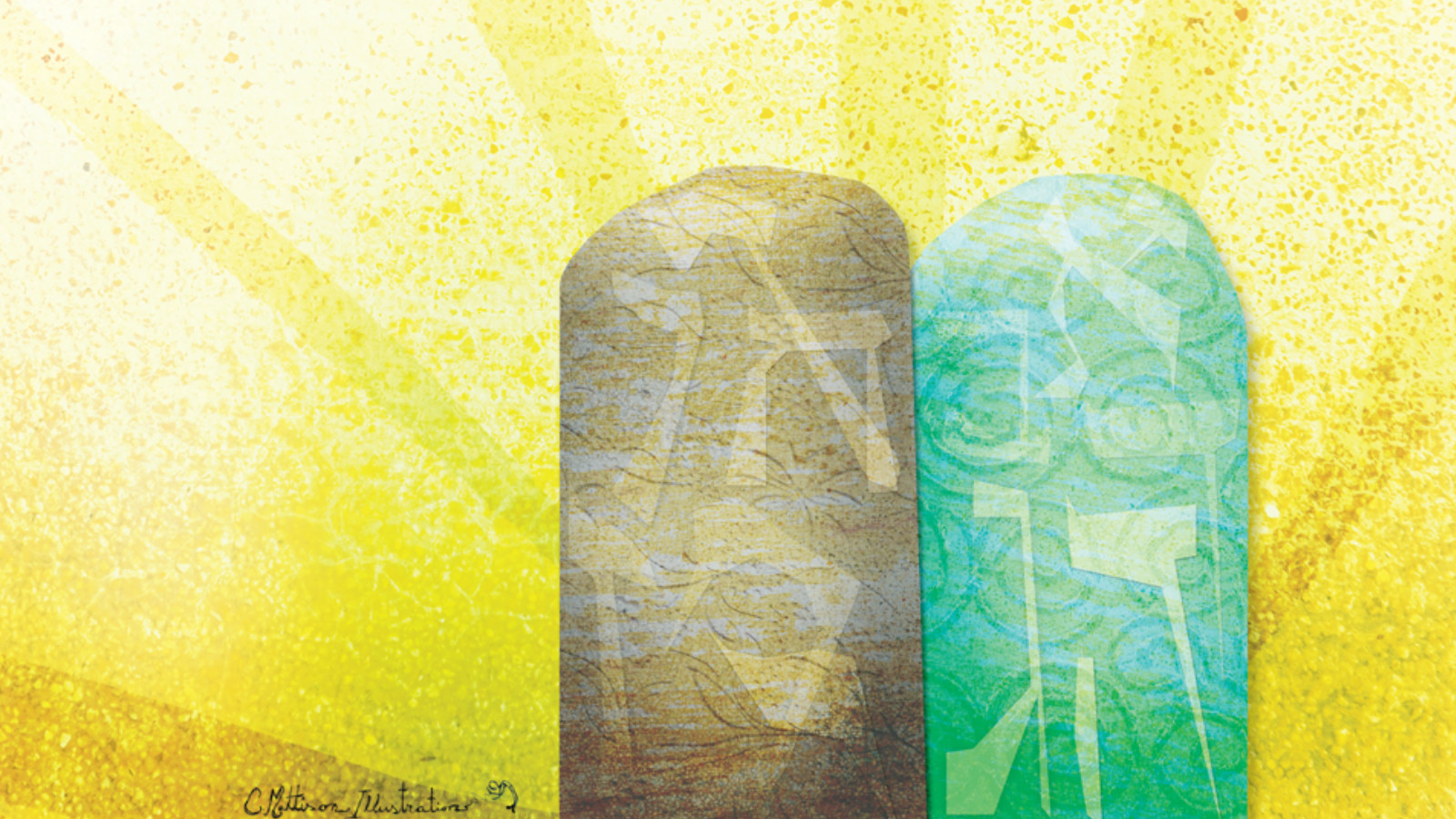Commentary on Parashat Yitro, Exodus 18:1 - 20:23
Christianity turns on the doctrine of incarnation as formulated famously by the Gospel of John: “So the Word became flesh; he came to dwell among us, and we saw his glory, such glory as befits the Father’s only Son, full of grace and truth” (1:14). It is a doctrine that Jews tend to identify as uniquely Christian. Whereas both Judaism and Christianity equally acknowledged that at creation “the Word dwelt with God” (1:1) as both wisdom and instrument, Judaism refrained from ever endowing it with human form. Though valid, the distinction does not preclude the appearance in Judaism of the doctrine. For Judaism, the Word became incarnate as book.
The comparison occurs to me because of a Talmudic comment on the first word of the Ten Commandments. Like many such comments, its brevity conceals a world of profundity. The emphatic form of the pronoun “I,” anokhi, did not fail to arrest the midrashic imagination. R. Yochanan, the dominant Galilean rabbi of the third century, treated it as an acronym, that is, each letter stood for a word. Thus deconstructed, he read the word to amplify the divine authorship of the Decalogue: “I Myself, wrote and gave [this]” (Babylonian Talmud, Shabbat 105a). Implicitly, the statement affirms that the entire Torah embodies God’s word.
Jewish Incarnation
But Abraham Joshua Heschel in his final book Kotzk: A Struggle for Truth (Yiddish, 1973) goes beyond the doctrine that the Torah was literally revealed. In quoting this passage from the Talmud, he translates the words of R. Yochanan to mean “I give Myself in writing” (p. 58). That formulation is a Jewish version of incarnation. The words of the Torah are more than the medium of God’s will; they are the very form which God’s presence takes in our world of time and space. Concentration on the text leads to union with the Almighty.
In the spirit of the Baal Shem Tov, the founder of modern Hasidism, Heschel reminds us that when we study the words of a particular sage in the Talmud, we ought to conjure up his presence, to see him standing before us. Beyond understanding his words, we must actually live with him and feel the power of his spirit. Similarly, the words of the Torah enable us to lose ourselves in God’s presence.
The doctrine of incarnation is not absent from the synagogue either. Prior to reading the Torah, the gabbai on the bimah (that is, the reader’s assistant on the podium) in tones several verses on the virtues of the Torah and God. Not accidentally, they add up to 40 words, symbolizing the 40 days Moses spent atop Mount Sinai. Thereafter, the congregation responds with the verse from Deuteronomy 4:4 “Those of you who have held fast to the Lord your God are all alive today.” In this scene of religious theater in the synagogue we are affirming that the text of the Torah is God. The final verse does not speak of cleaving to the Torah but to God. The scroll we are about to read effects the mystical union of God and Israel. Ritual transforms reality.
Stripping the Words of Spirit
To read the Torah without that faith is to strip the words of their animating spirit, leaving them like a golem [inanimate creature that becomes animate]. The Torah described the two tablets that Moses brought down from Sinai as “God’s work and the writing as God’s writing” (Exodus 32:16). According to the Zohar, it was the divine writing that rendered the stone tablets portable. But when confronted with the idolatry and debauchery of the golden calf, the letters fled, re-ascending to heaven.
Moses did not smash the lifeless tablets that remained; too heavy to handle, they simply slipped from his hands (Kasher, Torah Shlemah, v. 21, pp. 129-30). Such is the fate of a sacred text that has lost its soul. No longer the galvanizing force of a faith community, it is left only to scholars to decipher and fathom.
Yet like the Christian doctrine of incarnation, which since the fifth century posited a Christ of two natures–divine and human–the Jewish version also allows for a twofold nature. In this conception, the Torah is aroiling composite of divine presence and human reaction, a gripping record of the lived experience of the eternal in the midst of the ephemeral.
The Torah reports that after Adam and Eve had eaten of the forbidden tree “they heard the sound of the Lord God moving about in the garden” (Genesis 3:8). Despite its idyllic state, the garden was not all divine. But God was surely to be found in it. So too in the fertile and effervescent expanse of the Torah, the voice of God becomes audible if we canonly muster the patience to listen intently. Should we succeed, we join a biblical dialectic that spanned nearly two millennia and then spawned a dynamic that is still going strong two millennia later.
Provided by the Jewish Theological Seminary, a Conservative rabbinical seminary and university of Jewish studies.
Torah
Pronunced: TORE-uh, Origin: Hebrew, the Five Books of Moses.
gabbai
Pronounced: GAH-bye, Origin: Aramaic, literally “tax collector,” but today means someone who assists with the Torah reading in synagogue.The gabbai usually determines who will be called up to the Torah for an aliyah and also assists with other aspects of coordinating worship.
bimah
Pronounced: BEE-muh, Origin: Hebrew, literally “stage,” this is the raised platform in a synagogue from which services are led and the the Torah is read.



